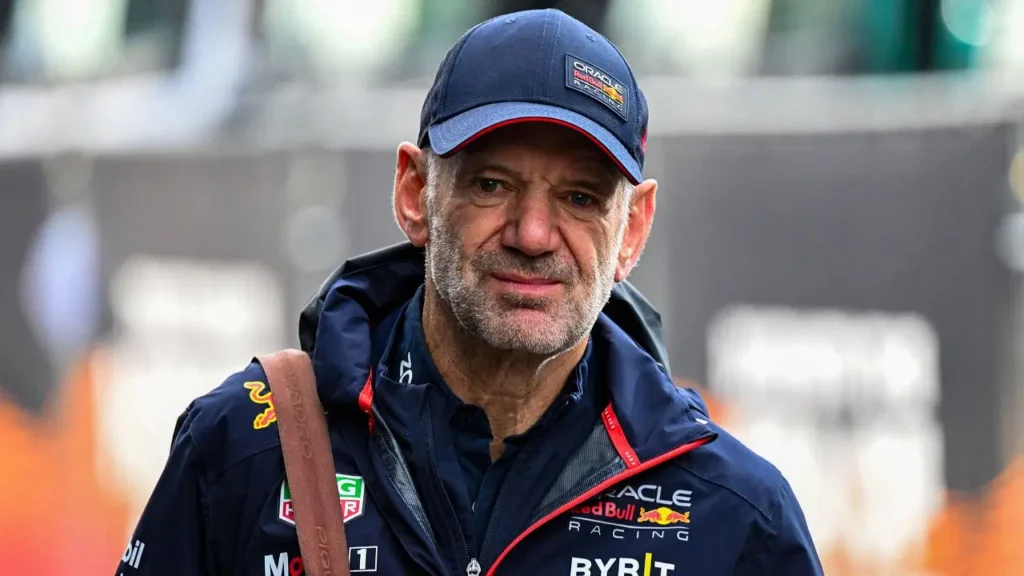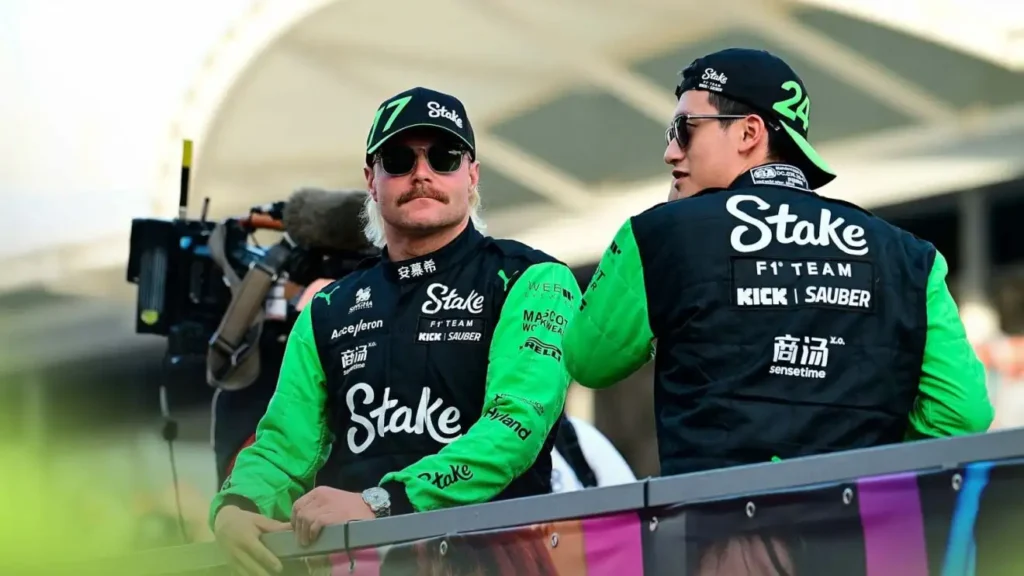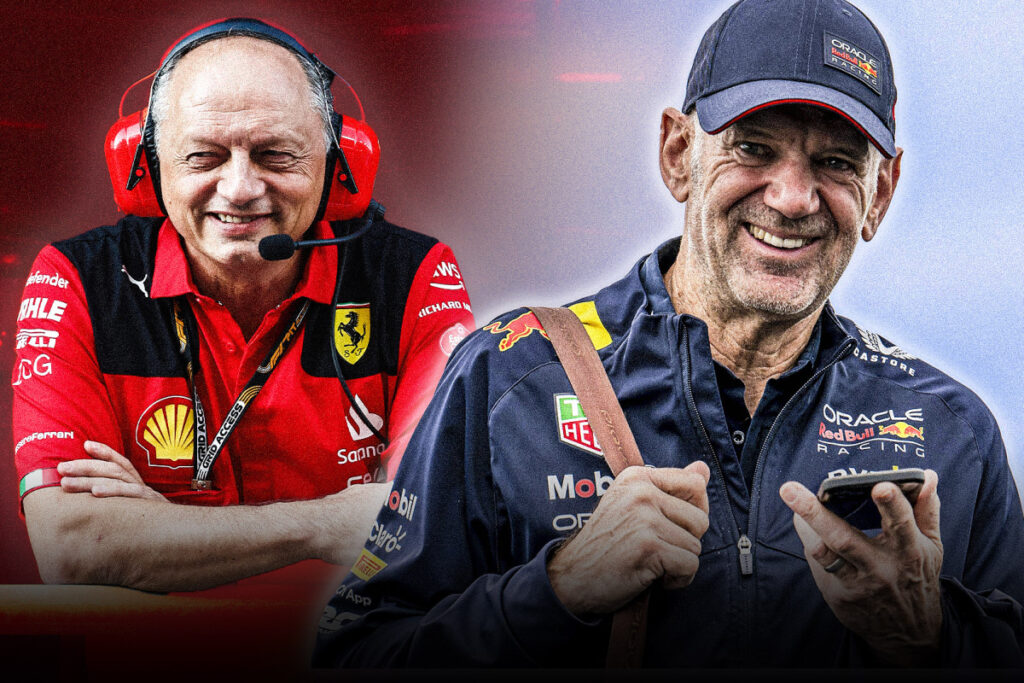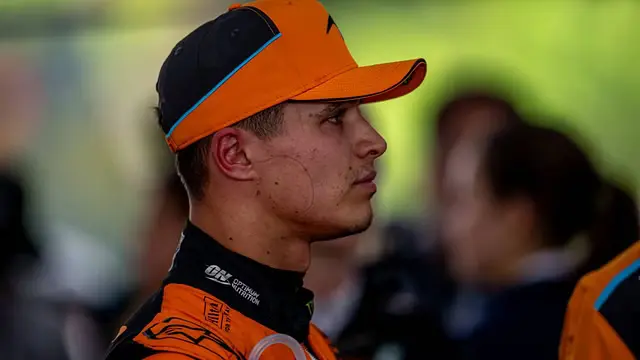Forget the fleeting glory of checkered flags. In the crucible of Formula One, McLaren paints the asphalt with a different kind of red – the crimson fire of relentless pursuit, where the very limits of man and machine are relentlessly pushed. This isn’t a team; it’s a breed, a primal heartbeat echoing through the circuits. A raging storm of innovation, audacity, and an insatiable hunger for victory surges through their veins. McLaren doesn’t settle for podium finishes; they hunt for glory on a racetrack transformed into a battleground.
Legends like Senna and Hakkinen are more than names – they’re echoes urging the next generation to greatness, their spirits woven into the very fabric of McLaren. The roar of the engine isn’t just a mechanical symphony; it’s a defiant battle cry against mediocrity, a primal call to arms that ignites the hearts of F1 purists. Forget prancing horses and their posturing; McLaren is the untamed spirit of the racetrack, a force of nature poised to redefine a legacy. Are you ready to witness the storm unleashed? Buckle up, because this isn’t just racing; this is McLaren rewriting the boundaries of Formula One.
The Orange Spark: The Story of McLaren's Motorsports Debut
McLaren’s entry into motorsports wasn’t a single grand entrance, but rather a story fueled by ambition and a touch of rebellion. Here’s the breakdown:
- The Driver With a Dream: Bruce McLaren (1958)
Our story begins with Bruce McLaren, a young and talented driver from New Zealand. He made his mark in Formula One racing for the Cooper team, even becoming the youngest Grand Prix winner at the time (a record that

stood for decades!). However, Bruce craved more. He wanted to not just drive, but build and compete with his own team.
- A Spark of Rebellion (1963)
When Bruce’s request to run a car with a more powerful engine for the Tasman Series (an Australasian championship) was denied by his Cooper employers, his competitive spirit ignited. He decided to take matters into his own hands.

- Birth of a Legend: Bruce McLaren Motor Racing (1963)
Thus, in 1963, Bruce McLaren Motor Racing Ltd. was born. This wasn’t just a team; it was an embodiment of Bruce’s vision– a place where innovation and audacious spirit would reign supreme.
They started by running modified Coopers in the Tasman Series, with Bruce himself behind the wheel.
- The Grand Prix Leap (1966)
After initial success in other racing categories, McLaren set its sights on the ultimate challenge – Formula One. In 1966, they entered the championship with their own car, the M2B. While early results were modest, the foundation for future greatness was laid.

So, McLaren’s entry into motorsports wasn’t a single, flashy debut, but rather a journey fueled by a driver’s ambition, a touch of rebellion, and a relentless pursuit of excellence. It’s this very spirit that continues to define McLaren as a force in Formula One today.
From Borrowed Tech to Building Expertise: McLaren's Technical Evolution
Founding Father:
Bruce McLaren (1938-1970): The visionary leader and racing driver who established Bruce McLaren Motor Racing Ltd. in 1963. His ambition and relentless pursuit of innovation laid the foundation for McLaren’s success.
While Bruce McLaren himself was certainly a technical innovator and driver, during the initial days of McLaren (from 1963 to the early 1970s), there wasn’t one singular technical mastermind. Here’s a breakdown of the technical landscape in those early years:
- Bruce McLaren’s Influence: As the founder and driving force behind the team, Bruce McLaren had a significant influence on the technical direction. He was known for his innovative spirit and constantly pushed the boundaries of car design within the limitations of the time.
- Early Collaborations: In the initial years, McLaren relied on collaborations with established chassis constructors like Cooper and Alfa Romeo for their early cars (M2B and M5A). This meant their technical expertise came from these partnering companies, with McLaren likely providing input on modifications and adaptations.

- The Rise of In-House Technical Expertise: As McLaren matured and gained experience, they gradually began to develop their in-house technical capabilities. Names like John Barnard and Robin Herd emerged within the team, taking on more prominent technical roles. However, it’s important to note that their significant contributions came a bit later in the 1970s.
Technical Masterminds:

The shrewd businessman and strategist who partnered with Bruce McLaren and played a crucial role in establishing McLaren as a top contender.

The meticulous and demanding leader who oversaw McLaren’s golden era in the 80s and 90s, with multiple championships and iconic driver pairings.

The brilliant aerodynamicist whose innovative car designs played a significant role in McLaren’s success during his tenure.
These are just a few of the many key figures who have shaped McLaren’s journey.
Remember, McLaren’s story is a rich tapestry woven by countless talented individuals – engineers, designers, pit crew members, and strategists who work tirelessly behind the scenes. Their dedication and expertise are equally important in making McLaren a force to be reckoned with in Formula One.
McLaren's Rollercoaster Ride: Triumphs and Tribulations
McLaren’s story in Formula One isn’t a smooth victory lap. It’s a thrilling rollercoaster filled with exhilarating highs and crushing lows. Here’s a glimpse into their journey:
Early Struggles and the First Podium (1960s & Early 1970s):
- Uphill Battle: The initial years were a baptism by fire. McLaren’s early cars, often modifications of existing models, weren’t always competitive against established teams like Lotus and Brabham.
- A Spark of Promise: Despite the challenges, there were moments of brilliance. The first podium came in the 1968 Belgian Grand Prix, with Bruce McLaren himself finishing second. This success hinted at the potential McLaren possessed.
Golden Era and Championship Glory (1970s & 1980s):
- Fittipaldi and the First Titles: The arrival of Emerson Fittipaldi in 1970 marked a turning point. With his talent and McLaren’s reliable car (the M19), they secured the team’s first two World Championships (1972 & 1974).

- Hunt vs Lauda: A Legendary Rivalry: James Hunt’s flamboyant personality and his thrilling 1976 championship win against Niki Lauda solidified McLaren’s place among F1 royalty.

Prost-Senna Rivalry and Continued Success (Late 1980s & Early 1990s):
- The Senna-Prost Era: The late 80s and early 90s witnessed another iconic period with legendary drivers Ayrton Senna and Alain Prost. Their fierce rivalry, both on and off the track, pushed McLaren to new heights.

- Senna’s Dominance: Senna’s unparalleled skill and dedication brought McLaren three consecutive World Championships (1988-1990), cementing their status as a dominant force.

Post-Senna Struggles and New Partnerships (Mid 1990s – Early 2000s):
- A Shadow Cast: Ayrton Senna’s tragic death in 1994 left a void that McLaren struggled to fill. Despite a championship win with Mika Hakkinen in 1998, the team faced inconsistency.

- Shifting Alliances: McLaren partnered with Mercedes as engine suppliers in 1995, a partnership that continues to this day.

Modern Era: Rebuilding and Signs of Resurgence (2000s – Present):
- A Period of Flux: The early 2000s saw a decline in competitiveness. McLaren shuffled through different engine suppliers and driver lineups, searching for a winning formula.
- Glimmers of Hope: In recent years, with drivers like Lando Norris and Carlos Sainz, McLaren has shown signs of resurgence. They secured a podium finish in 2019 (the first in several years) and are currently establishing themselves as a strong midfield contender.
This is just a brief overview of McLaren’s rollercoaster ride. Their story is filled with more details, iconic races, and legendary drivers. There’s a reason McLaren is one of the most celebrated teams in F1 history – their journey is a testament to resilience, innovation, and the pursuit of excellence.
McLaren's Pioneering Pilots and Legendary Champions
McLaren’s driver roster boasts a rich tapestry of talent. Here’s a breakdown of those who started it all and the legends who brought glory:
The Pioneering Pair (1966-1968):
- Bruce McLaren (1966-1970): Not just the founder, but also the first driver behind the wheel of a McLaren in Formula One. His determination and racing prowess laid the groundwork for the team’s future success.


- Chris Amon (1966-1967): A talented young driver from New Zealand, Amon partnered with Bruce McLaren in the early days. While podium finishes eluded them initially, they showcased the potential of the McLaren car.
The First Podium and Championship Victories (1968-1978):
- Denny Hulme (1968-1971): Joining McLaren in 1968, Hulme secured the team’s first podium finish at the Belgian Grand Prix that same year. He consistently delivered strong results, even challenging for the championship in 1968.
- Emerson Fittipaldi (1970-1974): A true legend, Fittipaldi brought McLaren their first two World Championships (1972 & 1974). His talent and the reliable M19 car proved to be a winning combination.
- James Hunt (1976-1978): Hunt’s flamboyant personality and raw talent captivated audiences. His legendary rivalry with Niki Lauda in the 1976 championship season, which he ultimately won, cemented his place in McLaren and F1 history.
The Golden Era: Prost, Senna, and Hakkinen (1980s & 1990s):

- Ayrton Senna (1988-1993): Widely regarded as one of the greatest F1 drivers ever, Senna’s unparalleled skill and fierce determination brought McLaren three consecutive World Championships (1988-1990). His legacy continues to inspire generations of drivers.

- Alain Prost (1984-1989): A master of strategy and car control, Prost secured three World Championships (1985, 1986, 1989) for McLaren. His rivalry with Ayrton Senna became a defining chapter in F1 history.

- Mika Hakkinen (1993-2001): Following Senna’s passing, Hakkinen emerged as a worthy successor. He secured two World Championships for McLaren (1998 & 1999) in thrilling battles with Michael Schumacher.
These are just a few of the remarkable drivers who have donned the iconic McLaren colors. From the pioneers who laid the foundation to the legends who brought glory, each driver has played a crucial role in shaping the team’s story. McLaren’s driver selection has always been a blend of raw talent, strategic choices, and personalities that have resonated with fans, making them one of the most celebrated teams in Formula One.
Through Thick and Thin: McLaren's Enduring Legacy in Formula One
McLaren’s story in Formula One is a classic hero’s journey, filled with periods of exhilarating highs and crushing lows. Let’s delve into the peaks and valleys that have defined their legacy:
Achievements:
- Pioneering Spirit: From Bruce McLaren’s initial foray into building his own car to their constant innovation, McLaren has always pushed the boundaries of the sport.
- Championship Pedigree: With 12 World Championships (8 Constructors’ and 4 Drivers’), McLaren is the second-most successful team in F1 history behind Ferrari.

- Legendary Drivers: From the audacious James Hunt to the unparalleled Ayrton Senna, McLaren has been a breeding ground for some of F1’s most iconic drivers, fostering rivalries that have become part of the sport’s folklore.
- Technical Innovation: McLaren has a rich history of introducing groundbreaking concepts. While the third pedal (clutch) wasn’t their invention (it was already used in some pre-war cars), they were one of the first teams to consistently utilize it in Formula One during the 1960s, contributing to smoother gear changes and faster lap times. Other notable innovations include the introduction of carbon fiber chassis in 1981 (MP4/1) and the “wing car” concept in the late 1960s.
Failures:
- Inconsistent Performance: Despite their championship titles, McLaren has also experienced periods of inconsistency, particularly in the recent past. Finding the right car-driver combination and navigating complex engine supplier partnerships haven’t always been smooth sailing.
- Driver Rivalries: While legendary, the intense rivalries between drivers like Prost-Senna and Hamilton-Alonso (during his second stint with McLaren) sometimes resulted in internal conflicts, hindering overall team performance.
- Tragedy and Loss: The tragic death of Ayrton Senna in 1994 left a void that McLaren struggled to fill for many years. It marked a turning point in the team’s trajectory.
A Legacy of Innovation: McLaren's Pioneering Spirit in Formula One
McLaren’s journey in Formula One isn’t just about podium finishes and championship titles; it’s a continuous narrative of pushing the boundaries of technology and design. Here are some of the key innovations McLaren has introduced over the years:
Early Days (1960s & 1970s):

- Third Pedal (Clutch): While not the sole inventor, McLaren was one of the first teams to consistently utilize the third pedal in Formula One during the 1960s. This seemingly simple addition facilitated smoother gear changes and faster lap times.
- Wing Car Concept: Though eventually banned, McLaren’s “wing car” design in the late 1960s was a revolutionary attempt to generate downforce through large, elevated wings. The concept, though controversial, pushed the limits of aerodynamic understanding at the time.

The Golden Era (1980s & 1990s):
- Carbon Fiber Chassis (MP4/1, 1981): McLaren introduced the first Formula One car with a carbon fiber monocoque chassis in 1981 with the MP4/1. This groundbreaking technology offered a significant weight reduction compared to traditional aluminum chassis, improving car performance.

- Telemetry Systems: McLaren was a pioneer in developing sophisticated telemetry systems in the 1980s. These systems provided real-time data on car performance, allowing engineers to make adjustments during races and optimize car setup.
- Semi-Automatic Gearbox (1989): While not the first team to use it, McLaren’s introduction of a semi-automatic gearbox in 1989 marked a significant step towards the automatic gearboxes used today. It allowed for faster gear changes and improved driver focus.
Modern Era (2000s – Present):
- “Brake Steer” System (2010): This innovative system used the rear brakes to help steer the car through corners, improving agility and lap times. However, it was later banned for safety reasons.
- Double DRS Flap (2012): This aerodynamic innovation increased the effectiveness of the DRS (Drag Reduction System) by adding a second flap on the rear wing. While ultimately not a race-winning advantage, it showcased McLaren’s continued pursuit of aerodynamic efficiency.

Looking Ahead:
McLaren remains committed to innovation. Their recent focus on sustainable fuel development and potential applications of artificial intelligence in car design suggest they’re determined to stay at the forefront of technological advancement in Formula One.
Beyond these specific innovations, McLaren has consistently explored new materials, manufacturing techniques, and aerodynamic concepts. Their dedication to pushing the boundaries of what’s possible continues to be a defining characteristic of the team.
Speed and Strategy: Balancing Innovation with Financial Responsibility
McLaren’s financial journey in Formula One has been a rollercoaster ride, marked by periods of both stability and significant challenges. Here’s a breakdown of their financial management strategies:
- Early Years (1960s & 1970s):
Bootstrap Beginnings: Bruce McLaren initially funded the team with his own racing winnings and sponsorships. They relied on collaborations with established chassis constructors to keep costs down.
Success Breeds Sponsors: As McLaren started achieving podium finishes and championships, they attracted bigger sponsorships, providing a more sustainable financial base.
- Golden Era and Expansion (1980s & 1990s):
Tobacco Sponsorships: The booming tobacco industry became a major source of income for McLaren during this era. However, this reliance would become a challenge in the future with increasing regulations on tobacco advertising.
Strategic Partnerships: Partnerships with engine suppliers like Honda and Mercedes provided financial stability and access to cutting-edge technology.
- The Modern Era (2000s – Present):
Financial Struggles and Diversification: With the decline in tobacco sponsorships and fierce competition, McLaren faced financial difficulties in the early 2000s. They diversified their revenue streams through road car production and brand licensing deals.
Ownership Changes and Investment: In recent years, McLaren has seen changes in ownership and significant investments. The Bahrain Mumtalakat sovereign wealth fund has provided crucial financial backing. They also explored potential IPOs (Initial Public Offerings) to raise capital.

- Challenges and Considerations:
The High Cost of F1: Maintaining a competitive Formula One team is incredibly expensive. Development costs for cars, travel expenses, driver salaries, and top-tier personnel all contribute to a significant financial burden.
Balancing Innovation and Cost Control: The constant need to innovate and develop new technologies can be financially draining. McLaren has to strike a delicate balance between staying competitive and managing their budget effectively.
Sustainable Funding Model: Finding a sustainable long-term funding model is crucial for McLaren’s future success. This might involve a combination of sponsorships, strategic partnerships, and alternative revenue streams.
- Looking Ahead:
McLaren is actively exploring ways to improve their financial situation. Their recent focus on esports ventures and Web3 technologies suggests they’re looking for innovative ways to engage with fans and generate new revenue streams.
It’s important to note that McLaren’s financial situation is complex and constantly evolving. The information above provides a general overview, and there’s always more to the story.
Beyond the Finish Line: The Art of Building Strategic Partnerships in F1
The First Sponsorship: Bootstrapping and Building Relationships (1960s):
- Limited Resources: In the early days, McLaren was a shoestring operation. Founder Bruce McLaren, a talented driver himself, funded the team primarily with his own racing winnings and prize money.
- Building Relationships: McLaren recognized the importance of sponsorships to sustain their racing ambitions. Bruce leveraged his racing connections and reputation to build relationships with potential sponsors. Early sponsors likely included smaller companies or dealerships associated with the racing world.
Securing Bigger Sponsorships: Success Breeds Opportunity (1970s & 1980s):
- On-Track Performance: As McLaren started achieving podium finishes and even championships (their first two with Emerson Fittipaldi in 1972 & 1974), their appeal to sponsors grew significantly.
- Increased Visibility: Success on the track translated into increased media coverage and public attention. This made McLaren a more attractive platform for companies looking to promote their brands to a global audience.
- Shifting Landscape: The 1970s and 1980s saw a rise in tobacco sponsorships in Formula One. McLaren, like many other teams, capitalized on this trend, securing lucrative deals with cigarette companies.

Strategic Partnerships and Diversification (1990s – Present):
- Evolving Landscape: With increasing regulations on tobacco advertising, McLaren had to diversify their sponsorship portfolio. They secured partnerships with companies from various sectors, like oil and gas (Texaco, Mobil 1) and technology (West McLaren Mercedes).
- Engine Supplier Partnerships: Partnerships with engine suppliers like Honda and Mercedes provided not just technological benefits but also co-branding and sponsorship opportunities. These deals often involve significant financial contributions from the engine supplier.
- Beyond Traditional Sponsorships: McLaren has explored new avenues in recent years. They have deals with clothing brands (Hugo Boss) and watchmakers (Richard Mille) for merchandise and branding opportunities.
Attracting Sponsors: A Multi-Faceted Approach
Here are some key factors that have helped McLaren attract sponsors over the years:
- Winning Record: A history of success, including championships and podium finishes, makes McLaren an attractive platform for brands seeking global exposure.
- Dedicated Fan Base: McLaren boasts a passionate fanbase worldwide, offering sponsors access to a loyal and engaged audience.
- Technological Innovation: McLaren’s reputation for pushing boundaries in car design and technology positions them as a partner for forward-thinking companies.
- Driver Selection: Having talented and popular drivers behind the wheel attracts sponsors who want to leverage their star power for marketing campaigns.
The sponsorship landscape in Formula One is constantly evolving. McLaren’s ability to adapt and explore new partnerships will be crucial for their financial stability and continued success in the sport.
Conclusion: A Legacy of Speed, Innovation, and Resilience
McLaren’s journey in Formula One is a captivating narrative of triumph and tribulation. From Bruce McLaren’s initial dream to the current battles on the grid, their story is a testament to unwavering passion, relentless innovation, and the pursuit of excellence.
Key Takeaways:
- A Legacy of Champions: McLaren’s history is adorned with championship titles, legendary drivers, and groundbreaking innovations. They have consistently pushed the boundaries of what’s possible in the sport.
- The Thrill of Rivalry: McLaren’s battles with other teams, from the iconic Prost-Senna clashes to the modern fight for podium finishes, have fueled excitement and technological advancements in F1.
- Adapting to Change: The ever-evolving landscape of F1, with its regulations, competition, and financial considerations, has demanded constant adaptation. McLaren’s ability to adjust and forge new paths has been crucial for their survival.
- A Look Ahead: McLaren’s recent resurgence with young talent and their focus on sustainable technologies suggest they’re determined to write new chapters in their F1 legacy. The future promises new challenges and triumphs, but one thing remains certain: McLaren’s unwavering spirit will continue to propel them forward in the relentless pursuit of victory.
McLaren’s story is more than just a chronicle of races and championships. It’s a testament to the human spirit’s ability to dream big, overcome challenges, and leave a lasting mark on the world of motorsports.







Pingback: Lando Norris Calls Out F1’s Busy Schedule: Is There Merit to His Complaint? | F1 Mavericks
Pingback: Norris Steals Miami Glory with First F1 Victory in Dramatic Race | F1 Mavericks